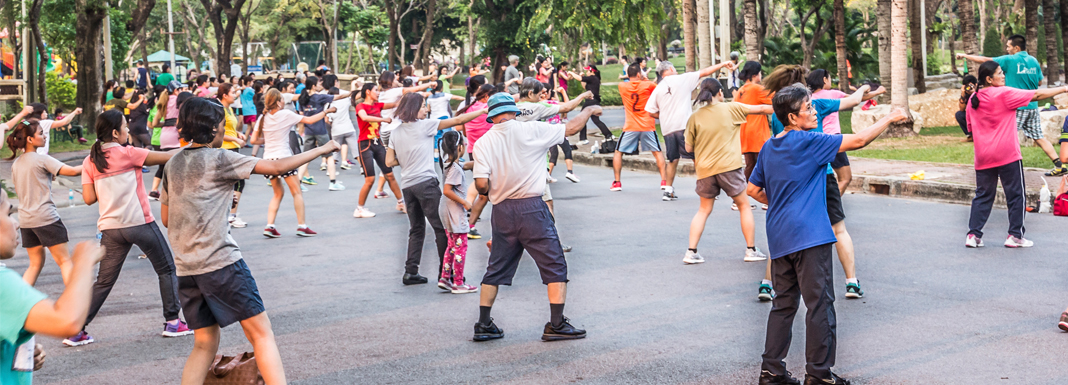Eighty percent of North Americans have X-ray evidence of osteoarthritis by age 65, and sixty percent have significant joint pain. More than 700,000 people in the United States have their knees replaced each year. It now looks like inflammation, lack of exercise and being overweight are the major causes of knee joint pain.
A prospective study following more than 6500 middle-aged women for 12 years showed that those who exercised regularly had far fewer complaints of joint pain than those who did not exercise or who exercised only a little bit
In another study, 31 obese patients ages 50–75, with X-ray evidence of knee cartilage damage, followed a 12-week exercise program of walking on a treadmill
• knee pain at rest,
• knee pain during walking,
• thigh muscle strength,
• ability to perform their daily activities, and
• quality of life.
Mechanism of Knee Cartilage Damage
The knee cartilage in adults does not have a direct blood supply. Knee cartilage gets its nutrients and is strengthened by the constant pumping action of bending and straightening the knee. Not moving your knees frequently can deprive the cartilage of nutrients and it becomes smaller and weaker. Of course you can damage your cartilage in sports activities or an accident, but less than 10 percent of osteoarthritis-related loss of knee cartilage has been caused by trauma. The majority of people with knee pain have rarely exercised, never competed in sports and are overweight.
Osteoarthritis Can Be Caused by Inflammation
Recent research show that osteoarthritis can be caused by inflammation, the same overactive immunity that causes heart attacks. Your immunity is good for you because it kills germs that try to invade your body and repairs damage from injuries. However, after the germ is gone or a wound is healed, your immunity is supposed to slow down. If your immunity remains overactive, it can use the same chemicals and cells that attack germs to attack the cartilage in your joints to cause osteoarthritis as well as other diseases of inflammation.
Little Evidence that Surgery Helps to Treat Knee Osteoarthritis
Surgery called arthroscopic partial meniscectomy (trimming of a torn knee meniscus) is one of the most common procedures done in North America. More than 750,000 knee arthroscopies done in the United States each year, but research has shown that:
• Exercise is more effective than arthroscopic partial meniscectomy in treating people with knee pain and degenerative meniscal tears
• Surgery has not been shown to be more effective than exercise in treating knee osteoarthritis
• Arthroscopic partial meniscectomy is not more effective than sham placebo surgery for a degenerative meniscal tear
My Recommendations
• If your knees hurt, first try to find out the cause of your pain. Check with a doctor to see if you have a specific type of arthritis, infection, gout, psoriasis or some other known cause.
• If you have sudden locking of your joint and it gets better, and then recurs, you may have “joint mice”, loose pieces of cartilage that slip between the cartilage to cause horrible pain. Your doctor can usually cure you by removing these loose pieces with arthroscopy.
• If no cause is found for your knee pain, you will probably be given a diagnosis of osteoarthritis. The recent studies I have quoted above show that inflammation may well be the cause of most cases of osteoarthritis, so your lifestyle should be as anti-inflammatory as possible.
• Eat an anti-inflammatory diet that includes lots of vegetables, fruit, whole grains, beans, seeds and nuts, and restricts foods with added sugar, sugared drinks including fruit juices, red meat, processed meats and fried foods.
• Lose weight if you are overweight
• Keep blood levels of hydroxy vitamin D above 20 ng/ml.
• Osteoarthritis always worsens with inactivity, so keep on moving. Be guided by pain and always stop if the pain worsens. Avoid sports that involve impact, since the force of your foot hitting the ground can break off cartilage. Do not run, jump, or participate in sports that involve your feet stiking the ground. Cycling and swimming are good low-impact sports.
• It is acceptable to try to control your pain with non-steroidal, anti-inflammatory drugs if you need them, but realize that they are only pain medications and do nothing to cure your joint pain, and they all have side effects. Take the lowest dose that is needed to relieve your pain.
• If the pain becomes so unbearable that it keeps you awake at night, you may want to consider a knee replacement. However, replacing your joint requires driving a spike into the middle of the bones of your knee and that pushes aside the shock-absorbing marrow and weakens the bone to increase your chances of breaking the bones when you fall. If that happens, the knee cannot be replaced again until the broken bones heal and you may be bedridden for a long time.

